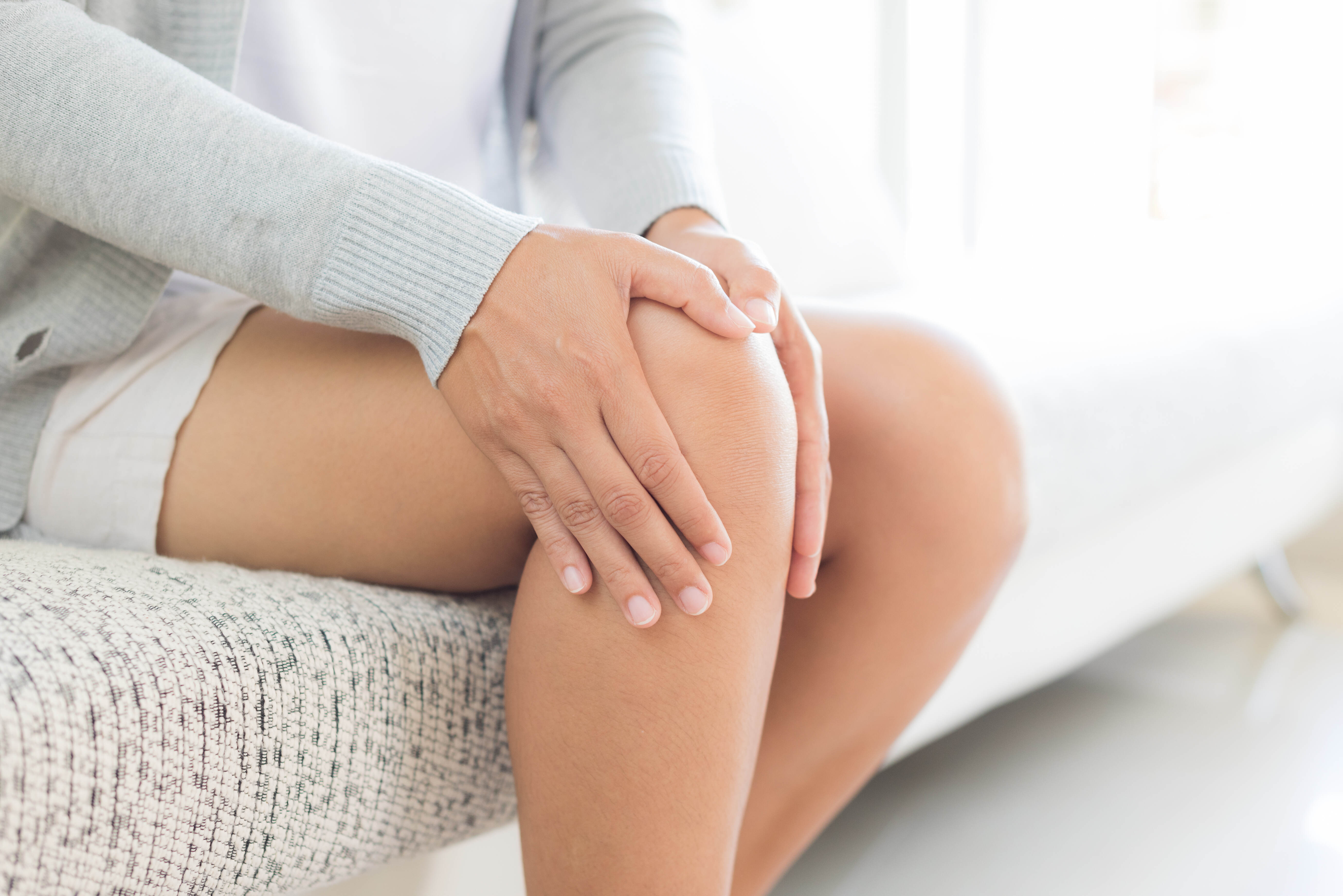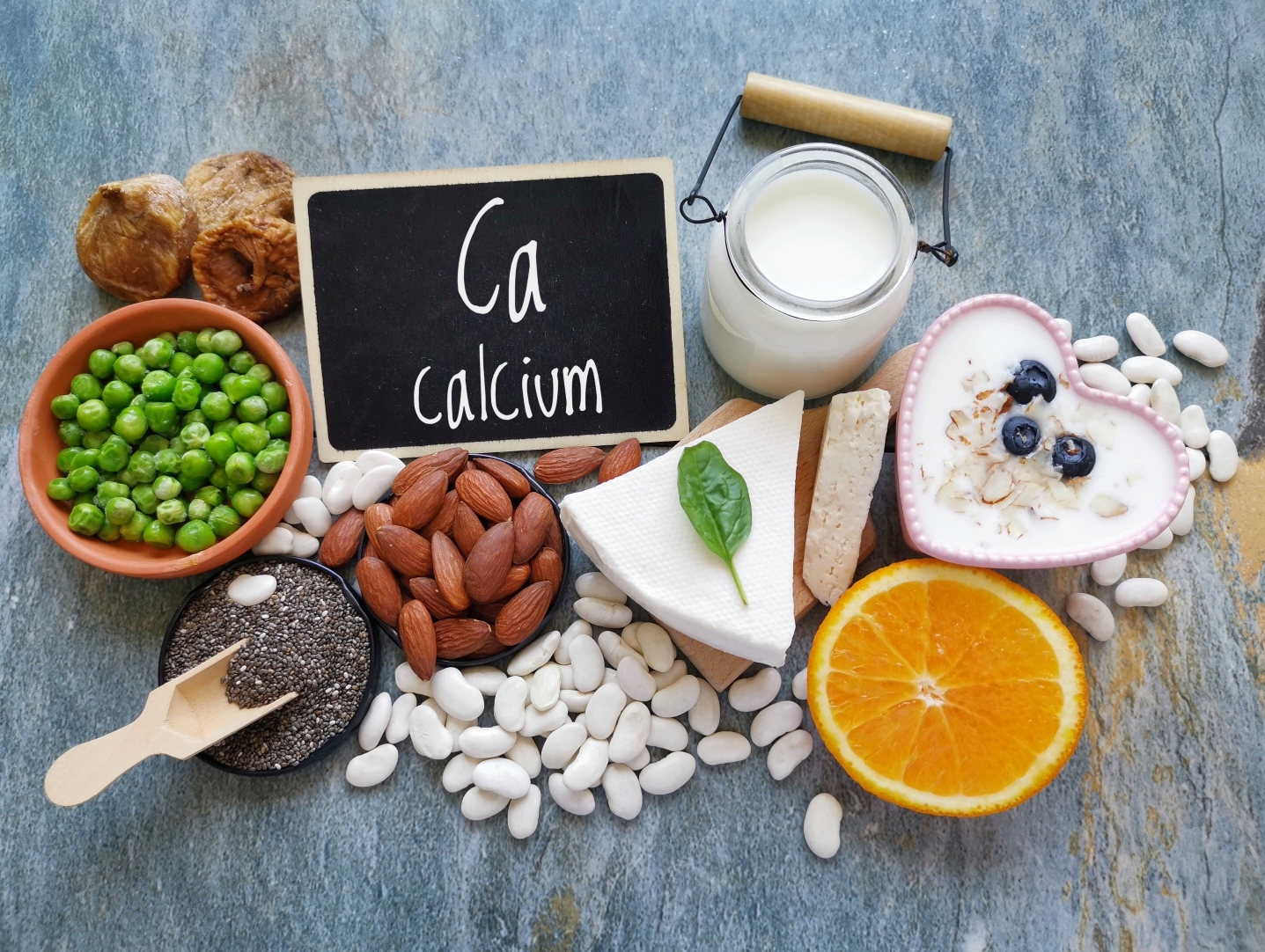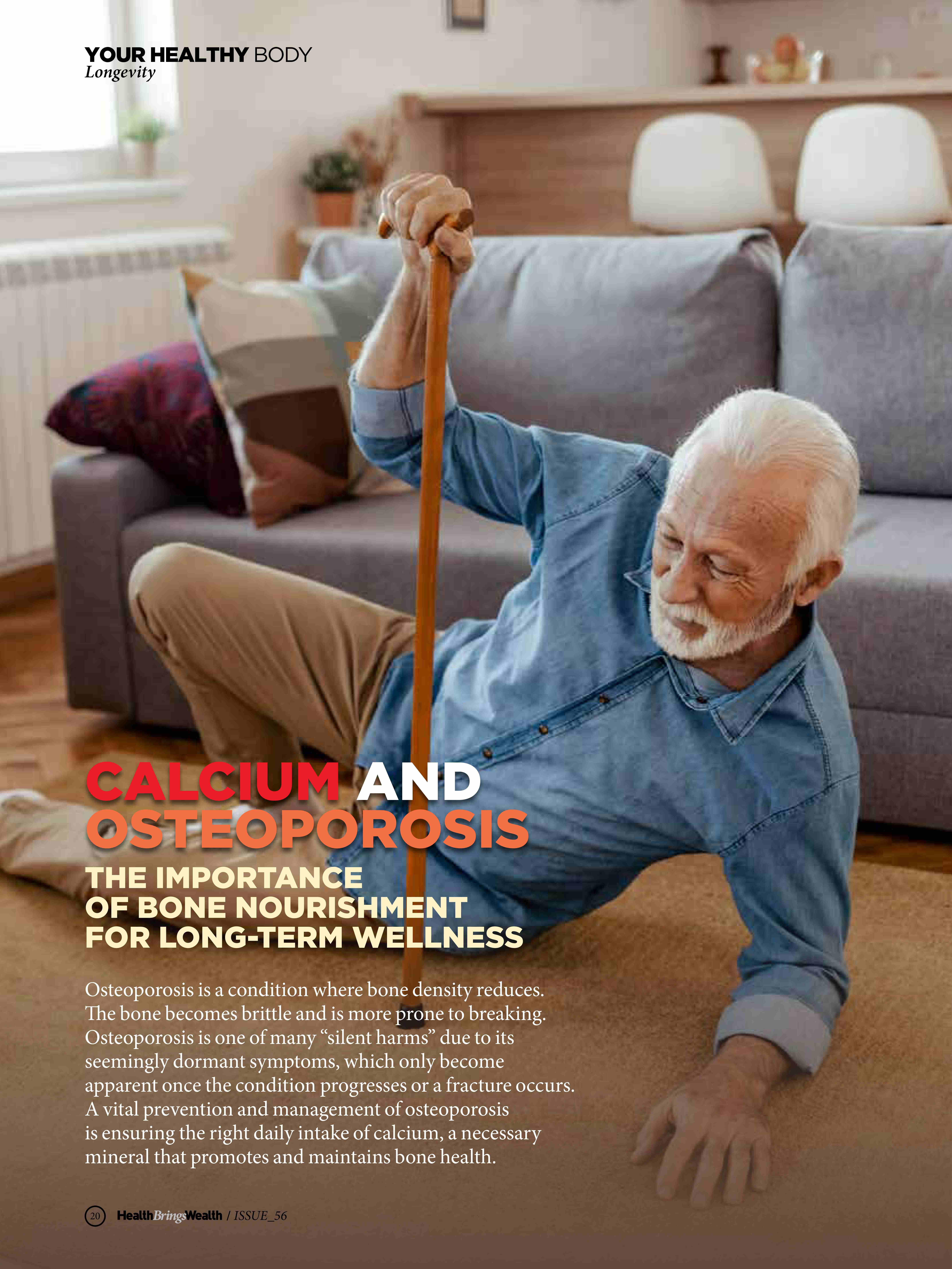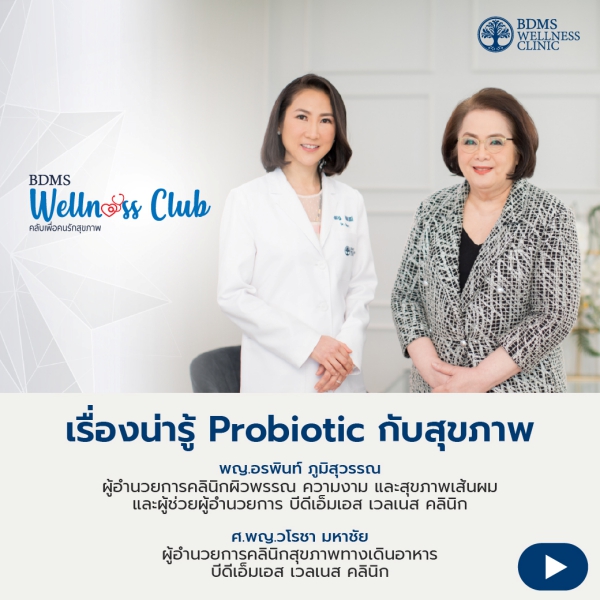Calcium and Osteoporosis: The Importance of Bone Nourishment for Long-Term Wellness
Osteoporosis is a condition where bone density reduces. The bone becomes brittle and is more prone to breaking. Osteoporosis is one of many “silent harms” due to its seemingly dormant symptoms, which only become apparent once the condition progresses or a fracture occurs. A vital prevention and management of osteoporosis is ensuring the right daily intake of calcium, a necessary mineral that promotes and maintains bone health.

Calcium’s Role in Bone Health
Calcium is the most abundant mineral that exists in the human body. It plays the key role in formation of bones, teeth, and the body’s main structure. Calcium also supports muscle function, nerve signaling, heart rate regulation, and hormone secretion. Around 98% of calcium in the body is stored in the form of Hydroxyapatite in bones and teeth, while the rest is found in blood, muscles, and tissues.
And so bones, comparable to a “calcium bank”, keeps the body in-check by carrying out constant bone remodeling, resorption, and formation. However, the rate of bone resorption may differ depending on the age and calcium requirement of each body.
For adolescents and teenagers, building and developing bone mass is the main goal. Once a person reaches adulthood, the goal shifts toward maintaining calcium balance and lowering the future risk of osteoporosis. The main goal for adults is to keep the rate of resorption at the lowest. However, if the body is calcium-deficient, calcium is drawn from its own bone mass and resorption rate is higher than formation, causing a lower bone density that leads to an increase risk of fracture.
Calcium Consumption and Osteoporosis
According to the Bureau of Nutrition under Thailand’s Ministry of Public Health, the recommended calcium intake for an adult is 800 milligrams per day. Although, in the case of a woman with menopause, the requirement is much higher and it is recommended to take 1,000 milligrams per day.

Calcium can be found in dairy products, such as milk and yogurt. For those who are lactose intolerant or vegetarian, other calcium-rich food sources may include tofu, green leafy vegetables, milk alternatives or plant-based milk, soy, almond, black sesame, white sesame, and so on. In addition to receiving sufficient calcium, vitamin D plays a significant role in maintaining good bone health. A vitamin D deficiency hinders calcium absorption in the body, which could lead to the loss of bone mass. While the body mainly synthesizes vitamin D via skin exposure to sunlight, some food items are excellent sources of vitamin D. These include fatty fish (such as salmon, tuna, sardine, and mackerels), mushrooms, and egg yolks.
Calcium is available in various forms, each differing in bioavailability—the amount of calcium the body can absorb and utilize. Calcium L-threonate, derived from corn, has an absorption rate of up to 90%, significantly higher than calcium carbonate, commonly found in animal shells such as eggshells and seashells, which is absorbed at only about 10%. Choosing the appropriate form of calcium is crucial for individuals with insufficient dietary calcium intake. Combined with vitamin D, it help prevent bone loss and reduce the risk of pelvic bone fractures.
However, consuming an excessive amount of calcium (over 2,500 milligrams per day for adults, and over 2,000 milligrams per day for the elderly) may lead to formation of kidney stones or calcification of arteries. Therefore, it is essential to seek advice from a specialist physician before starting a calcium supplement in order to maximize its benefit.

Lifestyle Factors and Osteoporosis Prevention
Besides sufficient calcium and vitamin D intake, lifestyle factors are equally significant in preventing osteoporosis.
- Exercise – Various forms of exercise help increase bone density, as well as being related to a decrease in the body’s fat ratio. This includes:
- Weight-bearing exercise, such as, walking, running, and walking up steps.
- Resistance training, such as, weight machines, free weights, and resistance bands.
- Balance training, such as, Tai Chi or yoga
- Abstinence from cigarette smoking and alcohol consumption – Smoking cigarettes and excessive alcohol consumption are related to greater loss of bone mass, which increases the risk of fractures.
Osteoporosis is a major public health issue, particularly for the elderly. The condition can be prevented with adequate daily calcium and vitamin D intake based on individual requirements. Together with leading a healthy lifestyle, this promotes bone health and minimizes the risk of osteoporosis in the future.
Reference
- Bureau of Nutrition, Department of Health, Ministry of Public Health. Dietary Reference Intake Tables for Thais 2020. Bangkok: A.V. Progressive Ltd., Part.: 2020. (in Thai)
- National Institutes of Health. Calcium [Internet]. Bethesda, MD: Office of Dietary Supplements; 2024 July 24 [cited 2024 Sep 1]. Available from: https://ods.od.nih.gov/factsheets/Calcium-HealthProfessional/
- Plantz MA, Bittar K. Dietary Calcium and Supplementation [Internet]. StatPearls. Treasure Island (FL): StatPearls Publishing; 2024 [cited 2024 Sep 19]. Available from: https://www.ncbi.nlm.nih.gov/books/NBK549792/
- Jiao D, Jiang C. Nutritional therapy of older osteoporotic people with supplemental calcium and vitamin D: side effects, fracture rates, and survival - an internationalised meta-analysis. Asia Pac J Clin Nutr. 2024;33(1):1-10.
- Lin Z, Shi G, Liao X, Huang J, Yu M, Liu W, et al. Correlation between sedentary activity, physical activity and bone mineral density and fat in America: National Health and Nutrition Examination Survey, 2011–2018. Scientific Reports. 2023 Jun 21;13(1).
- National Institute of Arthritis and Musculoskeletal and Skin Disease. Exercise for Your Bone Health [Internet]. Bethesda, MD: NIAMS; 2023 [cited 2024 Sep 1]. Available from: https://www.niams.nih.gov/health-topics/exercise-your-bone-health
- Sheng B, Li X, Nussler AK, Zhu S. The relationship between healthy lifestyles and bone health: A narrative review. Medicine (Baltimore). 2021;100(8):e24684.
- European Food Safety Authority (EFSA). Opinion on Calcium L‐threonate for use as a source of calcium in food supplements‐Scientific Panel on Food Additives and Nutrient Sources added to food (ANS). EFSA Journal. 2008 Nov;6(11):866.




